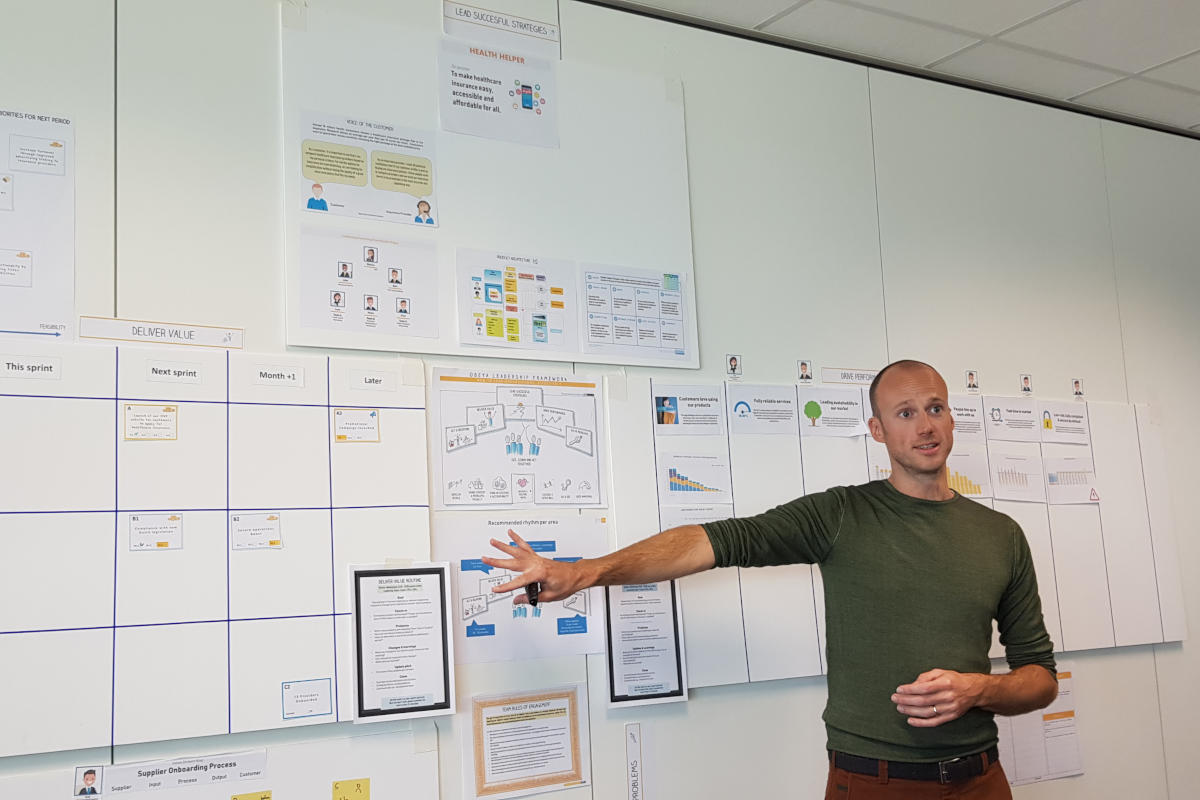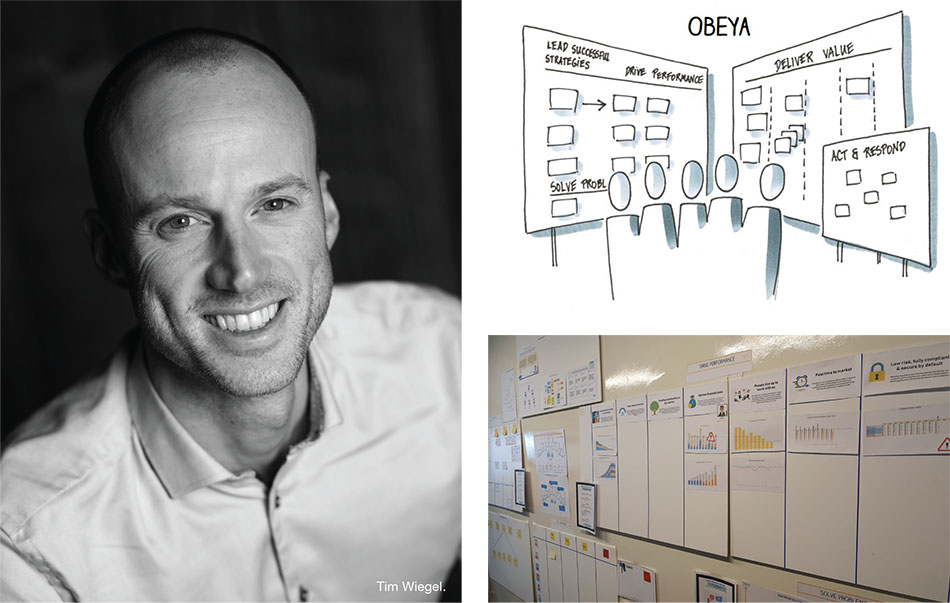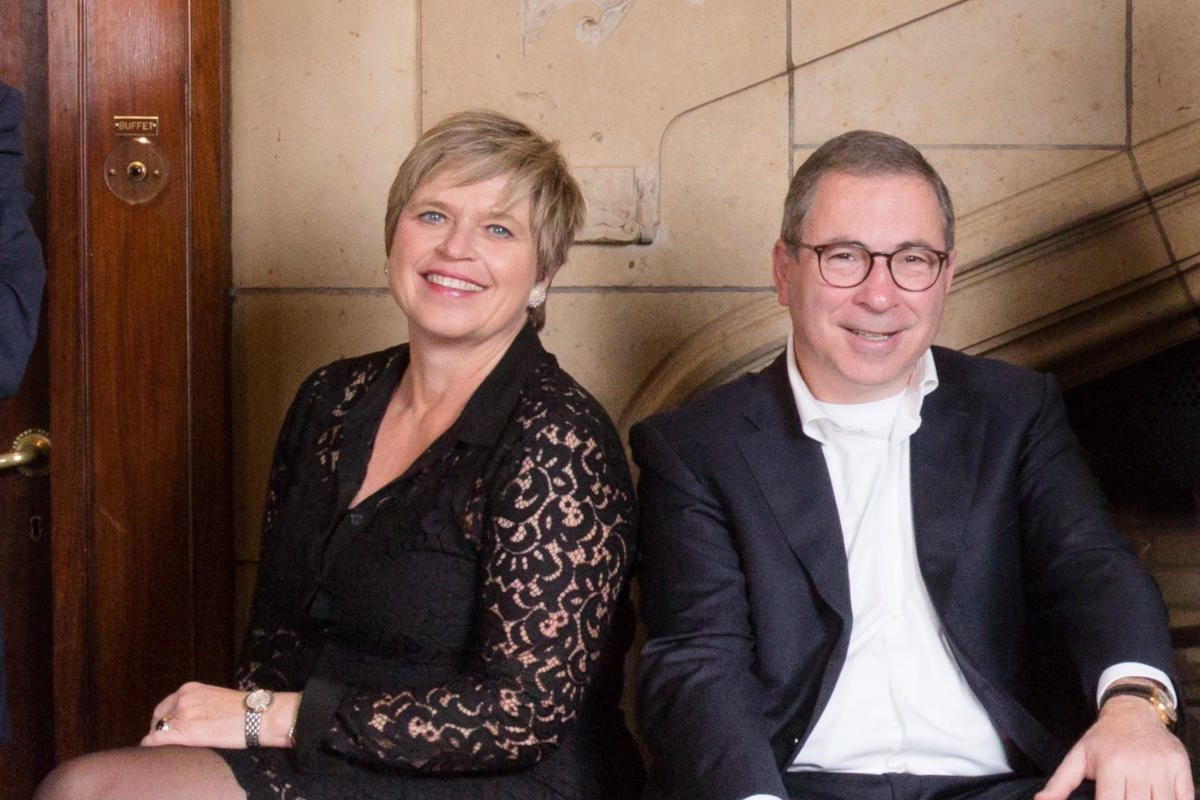Obeya : Addressing the challenges of modern leadership
Text: Maya Witters | Photos: Obeya

Leadership coach and consultant Tim Wiegel experienced an ‘aha’-moment when he learned about the Obeya concept in 2014. First coined in Japan, this method helps multi-disciplinary teams share essential context to act towards a common goal. Wiegel now uses Obeya as a foundation to help teams develop more effective management practices on all levels of an organisation. “Leadership is a craft that management teams should practice and develop together.”
Obeya, literally ‘large room’ in Japanese, was first used by Toyota during the creation of the revolutionary Prius model. By visualising goals, performance and activities and physically displaying them on the walls, teams become more aware of the context in which they are working, which enables them to act and learn together. At Toyota, this meant that the Prius was finished months before an already strenuous deadline, delivering a car that would pioneer the hybrid market.
Creating context together
Wiegel, who is writing a book about the application of Obeya for leading organisations, immediately recognised its potential for leadership teams. “Research shows that over half of employees in large organisations cannot relate their work to the organisation’s strategic goals, and that they’re not sure if their work is valuable. If that’s the case, what are people actually spending their time on?”
“I realised that the issue often lies in a lack of clarity and shared context,” explains Wiegel. “Companies and projects are increasingly complex in nature, and our brains are not well-equipped to deal with such levels of complexity. Additionally, our current cultural management philosophy leads us to focus on short-term goals rather than the long-term strategic objectives.”
“If different teams want to work together towards a common goal, they need consensus about what that goal is, what it means to their current organisation, what the different steps are, and which step happens when. If those aspects are unclear – or worse, if different managers have different opinions about them – teams will be steered in different directions, which leads to a lot of wasted effort.”
“Managers need to relearn how to think of the organisational system as a whole, and understand how different parts are linked. If you make a change in your product design, it will affect everyone from manufacturing to marketing and customer care. Obeya helps to bring issues like these to the surface by looking at the bigger picture.”

More than just visual clarity
However, simply decorating a room with your management reports will only leave you with a cool-looking reporting tool, warns Wiegel. “The visual aspect of Obeya is only one part of the story. Implementing the system properly requires guidance from an experienced coach, but also a sincerity in wanting to grow your capabilities as a team. It’s not a magic pill: you need to put serious work in to get the benefits. Only about a third of the effectiveness of Obeya comes from what you see on the walls – it also requires a change in mindset.”
One of the problems is the way we look at management, Wiegel explains. “The various leaders in an organisation often do not function as a coherent team. Each one may have different KPI’s and ideas about efficient management, and there is a distinct lack of communication and alignment. That leads to siloed behaviour, which ends up undermining the organisational system as a whole.”
“In reality, good leadership is a craft, not an innate talent that only few possess. And crafts must be studied, practiced and honed. This implies that good leadership depends on a constant willingness to learn from others. Obeya is a really good instrument to help shift from individualistic to collective leadership, which is essential for delivering consistent leadership throughout the organisation.”
Practical applications for immediate results
Wiegel helps management teams get on top of their game by providing two-day training sessions that are firmly aimed at achieving immediate practical changes within an organisation. “One of the biggest compliments I received was when a participant said he thought he was going to learn about a tool, and he ended up learning about all the key aspects of leadership and how to apply them in practice the next week,” he attests.
Sometimes, the training is given to whole teams. “That way, we can immediately apply the Obeya structure to the company’s strategy, unearth potential pitfalls and strengthen the human leadership potential,” explains Wiegel. “I’m there to help with years of practical experience, having learned from many pitfalls myself.” Based in the Netherlands, Wiegel offers his training and coaching services internationally. His book Leading with Obeya will be published this year.
“Where operational teams are adopting Lean and Agile ways of working, there is need for a similar practical approach on the leadership level to align both worlds. Obeya for leadership addresses this need. It’s not another hype for the bandwagon – it’s a tried-and-tested method that has produced amazing results worldwide,” concludes Wiegel. “I hope my book and coaching practice can help more organisations benefit from it, especially those that seek to make a positive social and environmental impact.”
To contact Tim, visit www.obeyacoaching.nl
Subscribe to Our Newsletter
Receive our monthly newsletter by email





